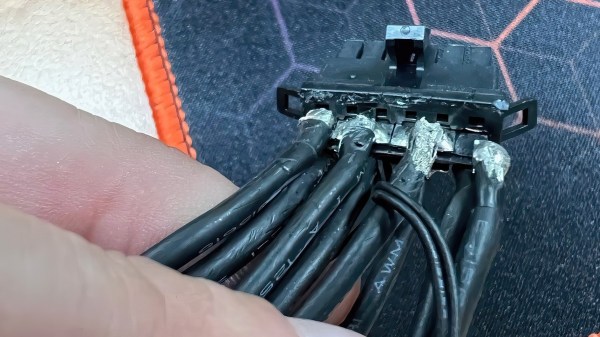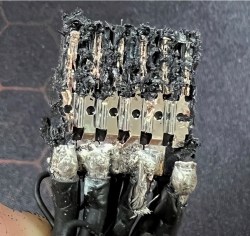The 12VHPWR connector is a hot topic once again – Nvidia has really let us down on this one. New 5080 and 500 GPUs come with this connector, and they’re once again fire-prone. Well, what if you’re stuck with a newly-built 5080, unwilling to give it up, still hoping to play the newest games or run LLMs locally? [Timo Birnschein] has a simple watchdog solution for you, and it’s super easy to build.
All it takes is an Arduino, three resistors, and three thermistors. Place the thermistors onto the connector’s problematic spots, download the companion software from GitHub, and plug the Arduino into your PC. If a temperature anomaly is detected, like one of the thermistors approaching 100C, the Arduino will simply shut down your PC. The software also includes a tray icon, temperature graphing, and stability features. All is open-source — breadboard it, flash it. You can even add more thermistors to the mix if you’d like!
This hack certainly doesn’t just help protect you from Nvidia’s latest creation – it can help you watch over any sort of potentially hot mod, and it’s very easy to build. Want to watch over connectors on your 3D printer? Build one of these! We’ve seen 12VHPWR have plenty of problems in the past on Nvidia’s cards – it looks like there are quite a few lessons Nvidia is yet to learn.




 The metal pads in question seem to be far too thin and structurally unsound, as one can readily spot, their cross-section is dwarfed by the cross-section of cables soldered to them. This would create a segment of increased resistance and heat loss, exacerbated by any flexing of the thick and unwieldy cabling. Due to the metal being so thin, the stress points seem quite flimsy, as one of the metal pads straight up broke off during disassembly of the connector.
The metal pads in question seem to be far too thin and structurally unsound, as one can readily spot, their cross-section is dwarfed by the cross-section of cables soldered to them. This would create a segment of increased resistance and heat loss, exacerbated by any flexing of the thick and unwieldy cabling. Due to the metal being so thin, the stress points seem quite flimsy, as one of the metal pads straight up broke off during disassembly of the connector.








